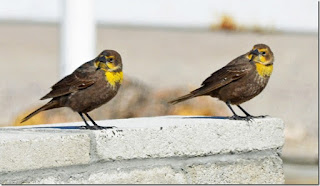The "Red-Tailed Hawk" live in all of the South West year round.. 50% of the hawks are
Red-Tailed Hawks.
Their head, back and wings are dark brown; under parts a light rufous and white, lower chest has a band of heavy brown streaks; tail is a pale orange below , a rufous above .They live in the open country, woodlands, prairie groves, mountains, plains. They are more common in April to September in Nevada and Utah. Their diet varies with location and seasons. They do munch on small mammals, birds, reptiles and snakes.
Kitfoxgal































